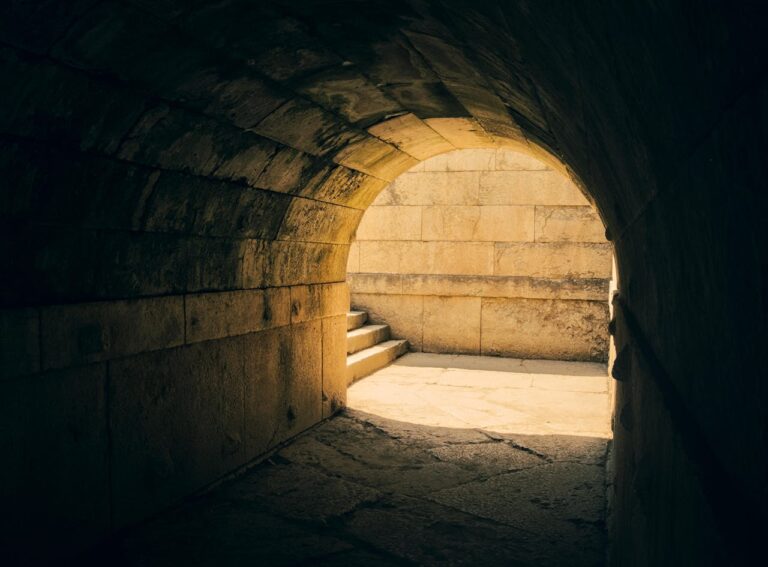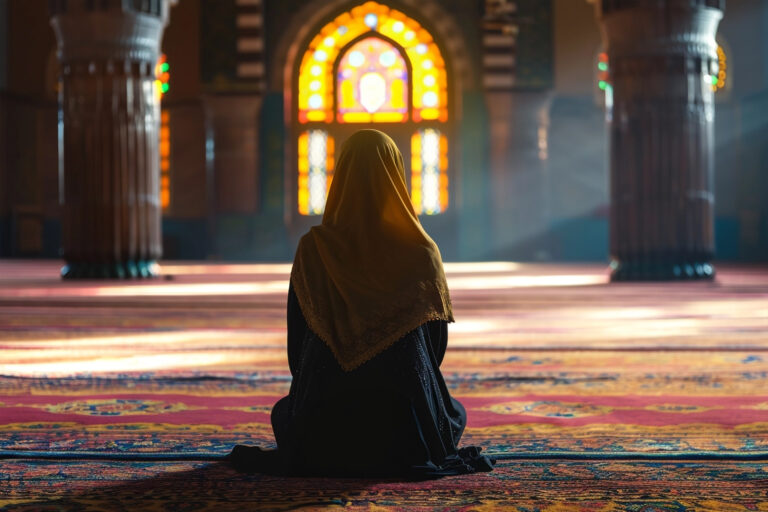What happened to Gautama (the Buddha) and to Jesus after their deaths? While Christians have historically held that Jesus rose from the dead and then, forty days later, ascended to the Father, the matter is less clear cut for Gautama’s destination. However, if we look at the earliest Buddhist writings, the Pali Canon, our primary source for this chapter, we find some helpful answers. After this brief overview, we will then ask how their destiny after death relates to something we can all appreciate: our struggle against suffering.
After the Buddha’s Death
As was typical when he was asked metaphysical questions, Gautama responded that to ask the question, “Does the Tathagata exist after death?” was to engage in useless speculation.[1] When it comes to nirvana, after all, as Williams, Tribe, and Wynne put it, “Since there is nothing left for the mind to fix on, nothing more can be said.”[2] Whatever nirvana is, no self remains to do any experiencing.
What we are told in the sutra that details Gautama’s entrance into nirvana is simply that “the Blessed One immediately passed away.” After all, at Gautama’s passing, Brahma Sahampati, the deity who had convinced Gautama to teach the Dharma, exclaimed, “All must depart—all beings that have life must shed their compound forms. Yea, even one, a master such as he.”[3]
Now, as we see in the later Lotus Sutra, many Buddhists (e.g., of the Mahayana branch, more on that below) view the Buddha as still accessible. In the Lotus Sutra, the Buddha is found to be very much alive; his death had been merely a skillful means in order to, as one parable represents it, shock his children into taking the medicine he prescribed.[4] Mahayana Buddhists who follow the Lotus Sutra thus see Gautama as having a colorful post-nirvanic existence, yet the sources that most reliably trace back to the historical Gautama (the Pali Canon) describe him entering nirvana and seeming to cease any earthly ministry. These canonical and foundational sutras’ perspective on nirvana and Gautama’s entrance into it does not match the Lotus Sutra’s optimism about Gautama’s post-mortem accessibility.
According to the Pali Canon, Gautama practiced what he preached: “Birth is ended, the holy life fulfilled, the task done. There is nothing further for this world.”[5]
“According to the Pali Canon, Gautama practiced what he preached: ‘Birth is ended, the holy life fulfilled, the task done. There is nothing further for this world.'”
After the Christ’s Death
When Jesus was arrested, most of the disciples scattered and ran (Mark 14:50). One disciple, Peter, followed at a distance, but, when he began to be indicted as one of Jesus’ followers, he violently denied any connection (Mark 14:66-72). Within days of their leader’s crucifixion, however, and in the same city, these same disciples were exclaiming to crowds in public, “God raised him up” (Acts 2:24a, ESV), and “Let all the house of Israel know for certain that God has made him both Lord and Christ, this Jesus whom you crucified” (Acts 2:36, ESV).
To explain this bizarre twist as well as how Jesus’ tomb had turned up empty, rumors had been circulating that these disciples must have stolen the body of their Lord and pretended he had risen from the dead (Matt. 28:11-15). Our earliest records of the apostles’ lives, however, tell us that they stuck to their story even unto martyrdom.[6] As Paul Williams writes, “They had become extremely brave. Why? And what motive could they have for such a conspiracy?”[7]
“Our earliest records of the apostles’ lives tell us that they stuck to their story even unto martyrdom.”
Scholars often date Jesus’ death at 30 C.E. Around twenty-five years later, the apostle Paul wrote a letter to the church in Corinth.[8] In his letter, he tells about a teaching he received from the church at Jerusalem twenty years earlier when he visited Jerusalem in 35 C.E.:
“For I delivered to you as of first importance what I also received: that Christ died for our sins in accordance with the Scriptures, that he was buried, that he was raised on the third day in accordance with the Scriptures, and that he appeared to Cephas, then to the twelve. Then he appeared to more than five hundred brothers at one time, most of whom are still alive, though some have fallen asleep. Then he appeared to James, then to all the apostles.” (1 Corinthians 15:3-7, ESV)
Paul himself had been a skeptic and a persecutor of the church (1 Timothy 1:13) until he experienced an appearance of Jesus, likely in 33 C.E. Thus, he adds to the end of these appearances, “Last of all, as to one untimely born, he appeared also to me” (1 Corinthians 15:8, ESV).
“Paul himself had been a skeptic and a persecutor of the church until he experienced an appearance of Jesus, likely in 33 C.E.”
Jesus died on a Friday, and it was Sunday that the rumors began that Jesus was alive. Luke, the first-century physician and church chronicler, explains, “He presented himself alive to them after his suffering by many proofs, appearing to them during forty days and speaking about the kingdom of God” (Acts 1:3, ESV). After promising to send his Holy Spirit to indwell and empower his followers, Jesus is said to have ascended to the Father (Acts 1:8-9). There, he is said to intercede on behalf of people (Hebrews 10:12-14; Hebrews 7:25; I John 2:1). This intercession, write Norman Geisler and Ron Rhodes, is crucial “for our salvation from the power of sin in the present. It is closely related to the lifelong process of sanctification, which involves progressively being made more and more like Christ.”[9]
How Their Destinations Relate to Combatting Suffering
Does this contrast tell us anything with regard to how these founders combat this-worldly suffering? Obviously, if Gautama is inaccessibly caught up in the negations of nirvana, and Jesus is actively interceding and intervening on behalf of people to this day, this shows a way in which Jesus is more actively involved in helping people than is Gautama. However, why should the Christian tradition of Jesus’ resurrection and continued eternal existence be thought any more credible than, for example, Gautama’s continued existence as a Mahayana teacher whose death was merely a skill-in-means?
Paul Williams, for years a faithful Buddhist who eventually became convinced of the truthfulness of Christianity, notes,
“[I]t does not seem to me that any other religion or spiritual teaching has anything so dramatic or convincing as resurrection from the dead—a resurrection that still seems plausible two thousand years later—to support its claims. Buddhists (and others) sometimes talk about the wonders their spiritual heroes and heroines have done and can do. But nowhere is there a case so clearly and plausibly demonstrated as the resurrection. That, it seems to me, is a fact.”[10]
After all, we are comparing the earliest yet comparatively far later records of Gautama’s life (by a span of some four hundred years) to a tradition traceable back to within five years of Jesus’ death—given to Paul at his visit to Jerusalem in 35 C.E. So, the contrast is a valid one, and here is what we learn: Gautama entered nirvana, while Jesus rose from the dead and continues to intercede on behalf of people. This presents another reason why Jesus is a superior paradigm when it comes to combatting this-worldly suffering.
“Gautama entered nirvana, while Jesus rose from the dead and continues to intercede on behalf of people.”
The Divide Between Theravada and Mahayana
Since this article deals with the aftermath of the Buddha’s death, let’s take this opportunity to mention a significant divide that took place within the Buddhist community after the Buddha’s death. Throughout studies in Buddhism, you will see the words “Theravada” and “Mahayana” pop up, and these are the terms usually given to the two major divisions of Buddhism. The rift became noticeable about a hundred years after the Buddha’s death at the “Second Council.”
Since we’re bringing up the “Second Council,” let’s also mention the “First Council.” At the “First Council,” shortly after the Buddha’s death, the Buddhist community brought together his teachings to commit it to writing. The result was a massive threefold collection called the Tripitaka (“the three baskets”), also called the “Pali Canon” (written in the Pali language). It included a handbook of rules for the Buddhist community (the Vinaya Pitaka), a collection of sayings and sermons by Gautama (the Sutta Pitaka), and a collection of Buddhist philosophy and beliefs (the Abhidhamma Pitaka).
Then, around a hundred years after the First Council came the Second Council. Here, there were Buddhists who voiced their conviction that Buddhism needed to be less tailored for the monks and nuns and more open to and oriented toward laity. It would be another couple hundred years before an actual split would take place. The group more concerned with helping regular people toward nirvana would call themselves “Mahayana” (the “great vehicle”), and they would call the branch which concerned itself primarily with getting monks and nuns to nirvana “Hinayana” (the “little vehicle”).
“There were Buddhists who voiced their conviction that Buddhism needed to be less tailored for the monks and nuns and more open to and oriented toward laity.”
The Hinayana, monk/nun-centered branch which remains to this day is called “Theravada” Buddhism. Theravada Buddhism is most at home in Sri Lanka, Cambodia, Laos, Myanmar, and Thailand. With these countries being in southern Asia, it is common to call Theravada Buddhism “Southern Buddhism.”
As the “great vehicle,” Mahayana Buddhism concerns itself with a broader goal than getting monks and nuns into nirvana. The lofty goal central to Mahayana Buddhism is getting all sentient beings into nirvana. Thus, in Mahayana Buddhism, it is a far worthier goal, not to become just a monk or nun able to enter nirvana, but to become an actual Buddha who helps usher others into nirvana first. Mahayana Buddhism would go onto branch into a bewildering array of subbranches, just as it would go far beyond the historical Gautama in finding Buddhas and bodhisattvas (Buddhas in the making) to admire and emulate. Countries most associated with Mahayana Buddhism tend to be in further north—China, Korea, Japan, Vietnam, Nepal, Mongolia, and Tibet—and thus Mahayana Buddhism is sometimes called “Northern Buddhism.”
Conclusion
Siddhartha Gautama was by all accounts an impressive person with a remarkable ministry. Yet, as we have seen throughout this series of articles on Jesus and the Buddha, Jesus consistently exceeds Gautama at multiple levels as his example relates to combatting this-worldly suffering.
- Gautama taught how to exit history, while Jesus exemplified how to change history.
- Gautama accepted suffering with equanimity, while Jesus grieved it as an unwelcome enemy.
- Gautama withdrew as a detached teacher, while Jesus drew near as an engaged friend.
- Gautama diagnosed our fundamental problem as ignorance, while Jesus diagnosed it more deeply as willful sin.
- Gautama taught a path of skill that leads to equanimity, while Jesus taught a path of yearning that leads to unspeakable joy.
- Gautama taught from cultivated insights, while Jesus commanded from absolute authority.
- Gautama released his disciples from suffering’s disturbance, while Jesus restored his disciples through suffering’s reversal.
- Gautama’s agenda was to minister peacefully until nirvana at an old age, while Jesus’ was to minister purposefully toward execution at a young age.
- Gautama exemplified a tranquil death, while Jesus exemplified the ultimate sacrifice.
- Gautama entered nirvana, while Jesus rose from the dead and continues to intercede on behalf of people.
The same contrast is already summarized for us in religious art, as Douglas Groothuis notes:
“Images of Buddha worldwide show a man sitting in tranquil contemplation with his eyes shut to a world he wants to transcend. How different from this posture was the defining act of Jesus, who, though nailed to a cross, bruised and bloodied, gazed in love on the world He came to redeem.”[11]
“Jesus consistently exceeds Gautama at multiple levels as his example relates to combatting this-worldly suffering.”
As the crucified and risen restorer, Jesus is indeed the ultimate paradigm of caring to his core about people in peril.
[1] “Brahmajala Sutta: The All-Embracing Net of Views (DN 1),” translated from the Pali by Bhikkhu Bodhi, Access to Insight, 2010, https://www.accesstoinsight.org/tipitaka/dn/dn.01.0.bodh.html (accessed December 13, 2014).
[2] Paul Williams, Anthony Tribe, and Alexander Wynne, Buddhist Thought: A Complete Introduction to the Indian Tradition, 36.
[3] “Maha-Parinibbana Sutta: Last Days of the Buddha (DN 16).”
[4] Paul Williams, Mahayana Buddhism: The Doctrinal Foundations, 157.
[5] “Chachakka Sutta: The Six Sextets (MN 148),” translated from the Pali by Thanissaro Bhikkhu, 1998, https://www.accesstoinsight.org/tipitaka/mn/mn.148.than.html (accessed December 13, 2014).
[6] See Acts 12:2 and Chapter 1 in Eusebius, Church History: Book III, translated by Arthur Cushman McGiffert, New Advent, 2009, https://www.newadvent.org/fathers/250103.htm (December 13, 2014).
[7] Paul Williams, Mahayana Buddhism: The Doctrinal Foundations, 123.
[8] F. F. Bruce, Paul: Apostle of the Heart Set Free (Carlisle: Paternoster Press, 1977), 475.
[9] Norman Geisler and Ron Rhodes, Conviction without Compromise: Standing Strong in the Core Beliefs of the Christian Faith (Eugene: Harvest House Publishers, 2008), 158.
[10] Paul Williams, Mahayana Buddhism: The Doctrinal Foundations, 134.
[11] Douglas R. Groothuis, “Jesus and Buddha: Two Masters or One?” Christian Research Journal, June 9, 2009, https://www.equip.org/article/jesus-and-buddha/ (accessed August 11, 2021).
Excerpted from Daniel McCoy, Buddhism or Christianity: Which Is Better for the World (Moral Apologetics Press, 2021).











